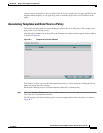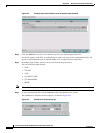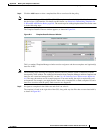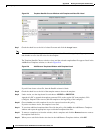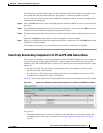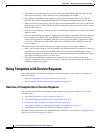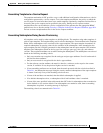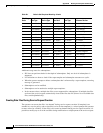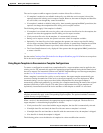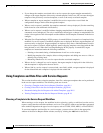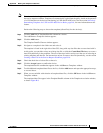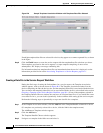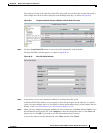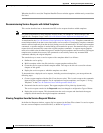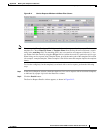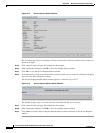
B-13
Cisco IP Solution Center L2VPN and Carrier Ethernet User Guide, 6.0
OL-21636-01
Appendix B Working with Templates and Data Files
Using Templates with Service Requests
The service request workflow supports dynamic creation of data files as follows:
• If a template is marked as non-editable in the policy on which the service request is based, the
operator cannot edit it during service request creation. However, the name of template and data files
are still visible, even though they cannot be modified.
• If a template is marked as editable in the policy, then (assuming appropriate RBAC permission) the
operator can change the template/data files during service request creation.
The following points apply if the template is editable:
• If a template is associated with a service policy, and at least one data file exists for the template, the
operator can select the appropriate data file during service request creation.
• If only one data file exists for the template, it is automatically selected.
• During service request creation, the operator can enter values for template variables.
• Optionally, if no data file exists for the template, the operator can create a new data file during
service request creation. When the Datafile Chooser window is opened from Template Association
window, a Create Datafile button is provided, which allows the new data file to be created.
• The Create Datafile button is only displayed if the operator has the appropriate RBAC permissions
to create a data file.
•
See the section Creating a Data File in the Service Request Workflow, page B-16 for how to set up a data
file in the service request workflow.
Using Negate Templates to Decommission Template Configurations
To remove a configuration created from a template/data file, a negate template must be applied to the
existing service. ISC automatically applies the appropriate negate template during the decommission of
the service request. For instructions on how to use the ISC Template Manager to create negate templates,
see the
Cisco IP Solution Center Infrastructure Reference, 6.0.
When a template is associated in a policy or service request, the negate template automatically gets
associated. During decommission of the service, the negate template is used for deployment. When
decommissioning a service request associated with a template/data file, the negate template is
automatically picked up dynamically, by searching for a template name having the name of the original
template followed by a suffix .Negate. This takes place at deployment time. Negate templates are
dynamically instantiated based on the device attributes of the template to which it is associated.
Note Optional attributes (such as device type, line card type, port type, and software version) applied to a
template automatically apply to the corresponding negate template. The optional attributes cannot be
applied directly to negate templates.
When a service is decommissioned, the appropriate negate template is deployed. The data file for a
negate template is selected during deployment as follows:
• If only one data file is associated with the negate template, the data file is automatically selected.
• If multiple data files are found, the data file with same name as template is selected.
• If multiple data files are found but no data file with the same name exists, the template is skipped.
• If no data file is found, the template is skipped.
The following points cover the behavior of templates in various modification scenarios:



